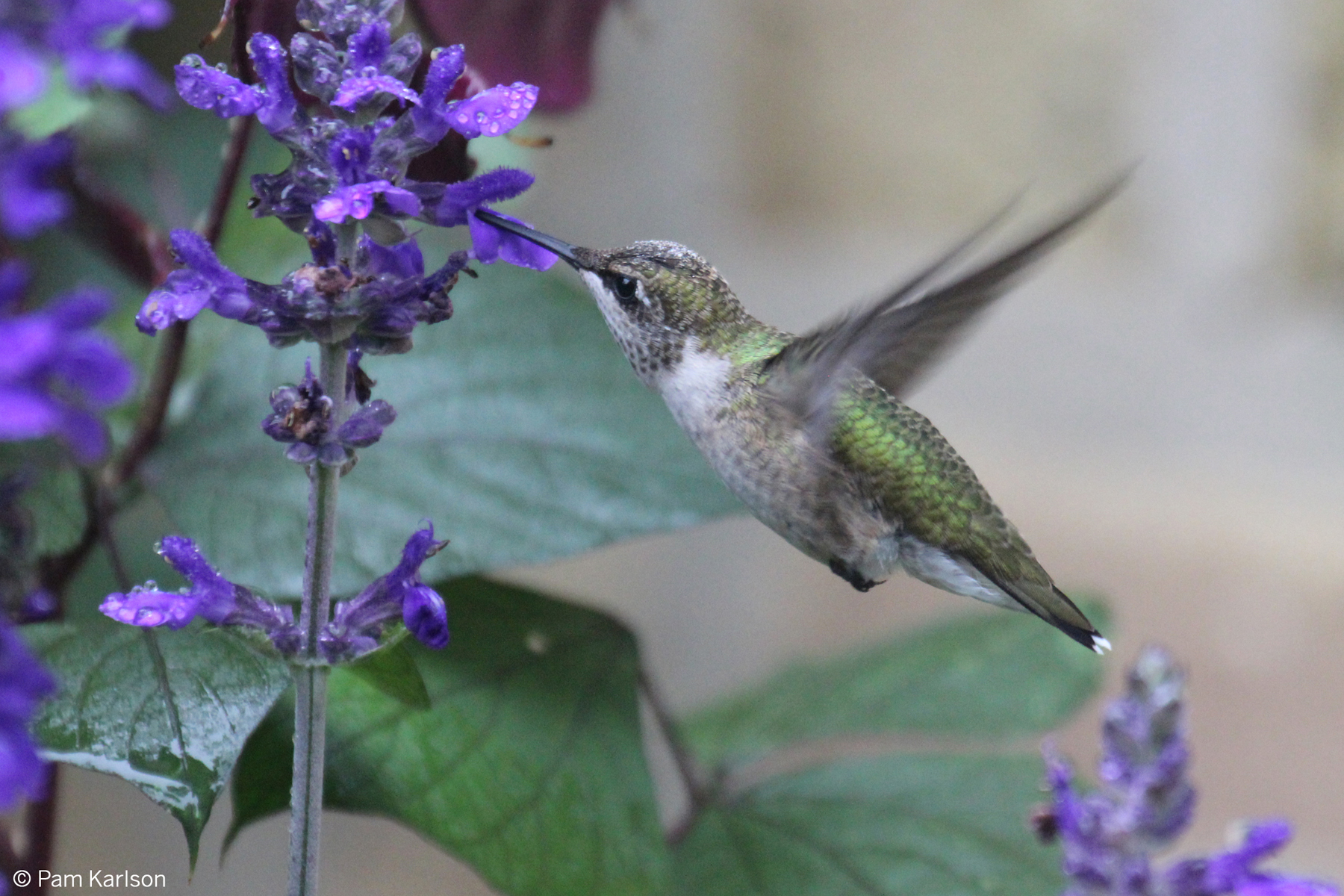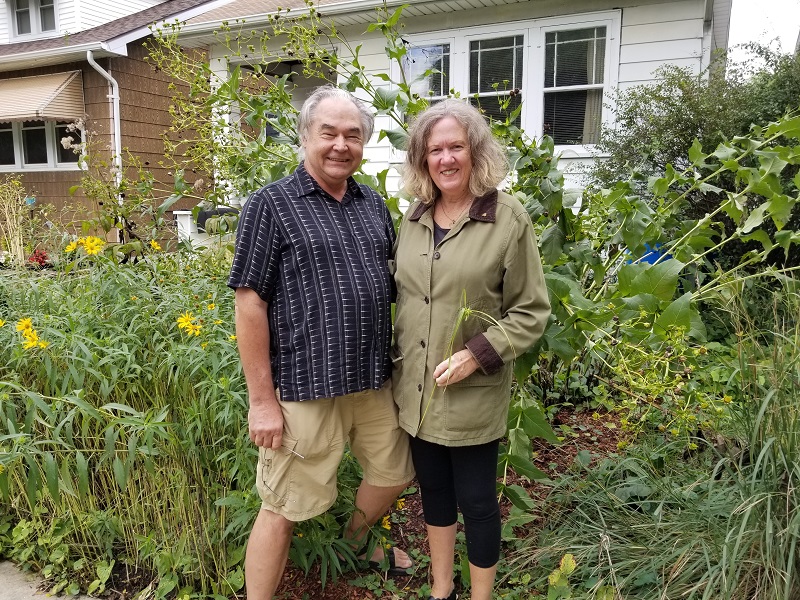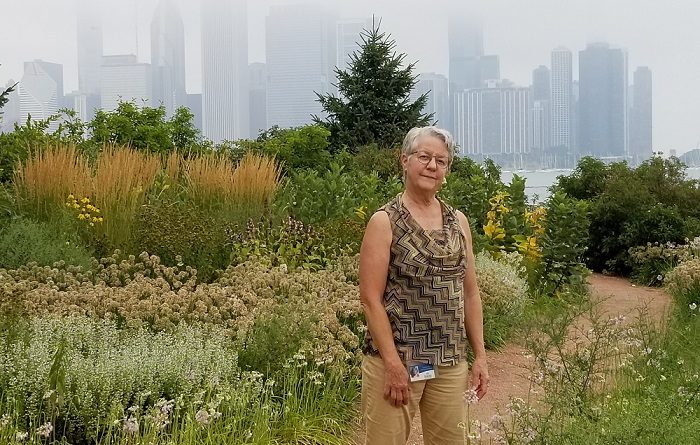Sustainable Landscapes Make an IMPACT
Podcast: Play in new window | Download (Duration: 1:43:57 — 48.8MB)
Subscribe: Apple Podcasts | Spotify | Android | iHeartRadio | Podchaser | Email | TuneIn | RSS | More
UPDATE, December 6, 2019 – CHICAGO GARDENERS DEFEAT CITY FINE FOR GROWING NATIVE PLANTS
In early October 2019, we covered the story of Pete and Noreen Czosnyka, longtime Northwest side residents who were facing a $675 fine from the city of Chicago due to “overgrown weeds” on their property. Problem is, the “overgrown weeds” were actually part of the duo’s sustainable landscape, featuring native plants. The Czosnykas decided to take the matter to court. On December 5th, it was determined that the city “failed to meet burden of proof” regarding the ticket, and the Czosnykas were therefore “not liable” for the fine! Sunday, December 8th, we welcome Pete Czosnyka and attorney Jeffrey Smith in-studio at WCGOradio to discuss the case. As Smith states, “The next and more important step is to get some change in City, county, and state law so that property-owners are no longer at peril for wildflower, butterfly, rain, or similar native gardens, as opposed to what the ordinance is intended to prevent, i.e., neglected, overgrown lots.” We wholeheartedly agree! Click the audio file above and scroll to the 1:00:00 mark to hear the conversation from October. And scroll down this page to read about it. Then tune in starting 9am CT on December 8, or catch the podcast here. Explore all your listen LIVE options on the home page of www.mikenowak.net. ]
(October 6, 2019) Another ILCA IMPACT Conference is around the corner. But when we talk about sustainable landscapes, we must start with our primary guest on this morning’s show, Christine Nye. For more than 20 years, until her recent retirement, Christine was horticultural manager at Chicago’s Shedd Aquarium. During that time, she transformed the 13 outside gardens on the property. There, she introduced visitors to native grasses, “nativars,” wildflowers, vegetables and the concept of sustainability.
Her most remarkable achievement, though, is the Migratory Bird Garden on Lake Michigan. It has been called “visionary” and it attracts thousands of birds each year along the migratory pathway known as the Mississippi Flyway.
The late summer photo at the top of this blog doesn’t do it justice. However, the expression on her face is pure Christine Nye. I suspect those who know her will agree.
Christine and I were among the earliest board members of the late, great Midwest Ecological Landscape Alliance or MELA. As I wrote last year,
A long time ago (2002) in an eco-system far, far away….a group of hort-warriors identified themselves as the Midwest Ecological Landscape Alliance, sometimes known as MELA. Their mission was to find less environmentally destructive ways of creating urban, suburban and exurban landscapes. How do I know about this? I was one of the two co-founders of the organization.
Sadly, this organization was forced to give up the ghost a couple of years ago. Fortunately, however, the Illinois Landscape Contractors Association (ILCA) seemed to understand the need for forward-thinking horticulture, and welcomed a number of the former MELA members into the Sustainable and Ecological Landscape Committee.
Though I hadn’t been active in MELA for awhile, I sat on the SELC for a couple of years to help create what is now known as The IMPACT Conference: Building Sustainable Landscapes. I have since moved on, but Christine remains on the committee. So today, in addition to looking back at Christine’s impact at the Shedd, we look forward to IMPACT.
The title this year Resilient Landscapes: Redefining the Design/Build/Maintain Paradigm. Not exactly sexy, but, hey, we’re talking about landscapers. The event is on October 22, from 8:30 a.m. to 4:30 p.m. at the Chicago Botanic Garden, and you can register here. Peggy and I will be at the conference, interviewing presenters and other interesting folks and streaming the videos live on Facebook and maybe even other social media.

Today we welcome several presenters at the conference. Pam Karlson is a career artist, avid gardener and birder. A long time volunteer with Flint Creek Wildlife Rehabilitation, she has been rescuing migratory birds for over 15 years. Having converted her Chicago backyard into a bird habitat, she has recorded 115 bird species in her garden. Her passion for gardening lead her to enrollment at the Joseph Regenstein, Jr. School of the Chicago Botanic Garden, obtaining Professional Gardener and Garden Designer certifications and now works in the industry.
Her talk is Birds in the Garden: Creating an Eco-Friendly Bird Oasis. As she writes,
Inviting birds into gardens is a joyful way to connect to nature and help sustain bird populations. This photo rich presentation featuring a Chicago bird garden illustrates it’s possible to attract over 110 bird species! Landscape enhancements, practices and plant selection, with an emphasis on natives/nativars will be covered. Chicagoland’s importance on the migratory route, bird species diversity, habitat, diet/foraging, nesting, supplemental feeding and citizen science will also be discussed.
A couple of presenters are old friends of the show. Annamaria Leon is a permaculture designer and teacher. She is co-founder of the Permaculture Chicago Teaching Institute, which was created as a response to climate change She’s also co-owner of Homan Grown, a social enterprise, wholesale perennial & tree nursery offering landscape design/build services in the North Lawndale neighborhood of Chicago.
By his own words, Ken Williams
has worked in construction, oil production, agriculture, horticulture, ecological restoration, landscaping and other things not spoken of in polite company. Mostly he’s a recycled vegetable gardener who wants people to do something useful with any piece of god’s green earth that they might be blessed with the opportunity to steward.
For 16 years he gardened a 100 acre city park and small zoo in southeast Kansas. Then he married Shedd Aquarium Horticulturist Christine Nye, moved to the Chicago area, and continued his nefarious pursuits. A sampling of his writings can be found at ringersblog.com
Together, Annamaria and Ken are presenting A New Vision for Permascaping, which they say will
review the differences between sustainable landscaping and ecological landscaping. You’ll also learn examples of how regenerative landscapes created community and can draw on economic renaissance. The audience will discuss how to participate in the development of integrated landscapes that provide for the needs of today without compromising the potential of tomorrow.
All I know is that we will have a room full of smart, accomplished and socially aware horticulturists. You don’t want to miss this.
Chicago is fining people for growing native plants…again
Back in 2012, I covered the story of a woman who was fined by the City of Chicago for growing “weeds” in her front yard. Her name is Kathy Cummings. At the time, I wrote,
You might be interested to know that in 2004, Kathy’s garden in the Humboldt Park neighborhood was the recipient of a first place award for “Most Naturalized City Garden” in the Mayor’s Landscape Awards program.
And then, this past Halloween, Kathy was fined $640 by the same city for apparently being in violation of its Rules and Regulations for Weed Control…by growing native plants.
Huh?
Indeed. Huh. For awhile, fining folks for growing native plants was a hot issue in Chicago. Then it seemed to disappear. Guess what? It’s baaaaaack!
 Kathy has continued to communicate with me over the years and a few weeks ago she alerted me to another victim of Chicago’s “weed” law. This time, Pete and Noreen Czosnyka, who live on Chicago’s northwest side, were slapped with a $675 fine. On June 22, 2019, a city inspector cited them for being in violation of Code 10-32-050, Failure To Maintain Parkway. The inspectors note reads, “weeds on parkway over 10 inches causing rodent problem.” They were also cited for violation of Code 7-28-120(A), Weeds In Excess Of Ten Inches. The note reads, “Weeds on property, on average, are greater than 10 inches in height.”
Kathy has continued to communicate with me over the years and a few weeks ago she alerted me to another victim of Chicago’s “weed” law. This time, Pete and Noreen Czosnyka, who live on Chicago’s northwest side, were slapped with a $675 fine. On June 22, 2019, a city inspector cited them for being in violation of Code 10-32-050, Failure To Maintain Parkway. The inspectors note reads, “weeds on parkway over 10 inches causing rodent problem.” They were also cited for violation of Code 7-28-120(A), Weeds In Excess Of Ten Inches. The note reads, “Weeds on property, on average, are greater than 10 inches in height.”
As I said, the inspection was done on June 22. They received the violation notice on September 4. Apparently, the Lord–and the City of Chicago–work in mysterious ways.
Pete didn’t take this lying down. He filed a Freedom of Information Act (FOIA) request, demanding
1) What City of Chicago employee holds Badge #1393 shown on the Notice?
2) Is employee with badge #1393 trained to recognize native plant gardens?
3) What is the evidence against me?
4) I request a copy to the Department of Streets and Sanitation Policy that is referred to in Aldermqn
Pawar’s newsletter
The City replied with black and white photos taken of the property, along with the citations listed above. I can’t tell if the name of the inspector is revealed. The signature is there, but I don’t see the name in print. There is no reference to the newsletter in the response to the FOIA.
By the way, Pete writes that “We got our plants from the City of Chicago from its now dead 2011 ‘Sustainable Backyard Program’, added an Earth machine composting bin, three rain barrels.” So they were basically doing what the asked its citizens to do a mere eight years ago.
Meanwhile, the issue of properties being cited for weed violations is more complicated than you might imagine. Just last night I received an email from Charlotte Adelmann, who is co-author of The Midwestern Native Garden; Midwestern Native Shrubs and Trees and Prairie Directory of North America, among other works. She has been on the show several times and has fought many battles over planting natives.
She writes (and it’s a lot),
This sloppily drafted, inarticulate, confusing, and misleading ordinance should be repealed. Several decisions have upheld the law, including those regarding Jay F. Shachter…
The most recent case upholding the Chicago Weed Ordinance (of which I am aware) is DISCOUNT INN INC v. CITY OF CHICAGO decided on September 28, 2015 by Judge Posner of the United States Court of Appeals, Seventh Circuit…
I wrote an article about this case for the Illinois Bar Association’s “Administrative Law” which is attached above under Weed Law Article. Note that at page 6, I write: “Later in the opinion Judge Posner comments that it is ‘plausible that the weed ordinance does not embrace native plant gardens.’ Although this is obiter dicta, |udge Posner’s plausibility argument may be useful to native plant gardeners with lawyers who receive citations for violating the weed ordinance.”
The weed ordinance creates a lot of confusion. People assume or conclude that the weed law references “native plants.” Even Judge Posner raised this possibility. (page 13 his opinion). However, when one reads the Chicago Weed Ordinance, it is clear that it does NOT reference non-woody vegetation, and also does not reference native plants, and non-native plants. These are all topics about which the Chicago weed ordinance is SILENT.
The confusion the weed ordinance causes is evident in: https://www.nbcchicago.com/news/local/couple-baffled-after-being-fined-for-native-prairie-plants-in-yard-561468371.html The summary on the web states: “The couple says that they hope their story helps people to become more aware of the difference between native plants and pesky weeds. “(We’d like to see) city workers who come out and inspect and give fines be trained, so they can tell a common weed from a native planting garden,” Peter Czosnyka said.”
However, the weed ordinance has NOTHING to do with “the difference between native plants and pesky weeds.” Moreover, even if city workers become skilled at distinguishing a “common weed” from a “native planting garden,” or a native plant, this ability will have NO impact on the outcome of a case charging violation of the Chicago Weed Ordinance. Why?
The reason is that the ordinance exclusively addresses weeds or weed which it defines as “vegetation that is not managed or maintained by the person who owns or controls the property on which all such vegetation is located, and which, on average, exceeds ten inches in height.”
And, as is evident from the definition of “weed,” the ordinance makes NO reference to and no distinction between native plants and nonnative plants.
The following could occur: A person can own or control a large property that is entirely 100% covered with non-native, invasive plants that, according to the judge’s finding, do not, on average, exceed 10 inches in height and which IS managed and maintained, and that property would not violate the Chicago Weed Ordinance.
The following could also occur: A person’s property could contain one plant and only one plant, and if the judge determines it is 11 inches tall (therefore more than 10 inches tall on average) and not managed or maintained, the person can be found guilty of violating the weed ordinance.
Sorry for pasting and cutting so much. But Charlotte has obviously thought about this a lot. We’re not going to solve the problem on today’s show. But we’ll give it a shot.

